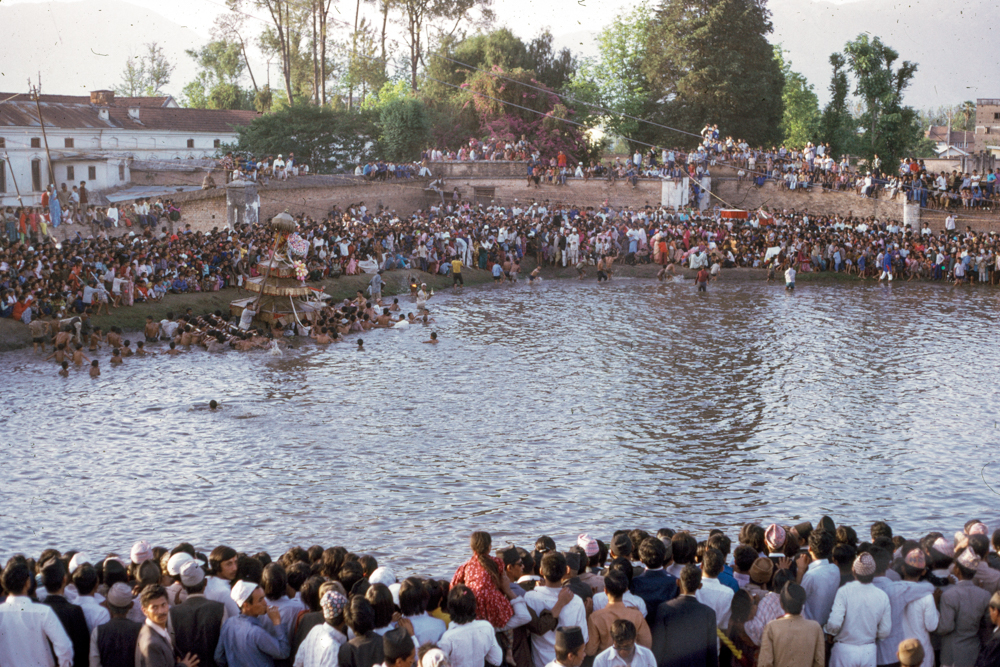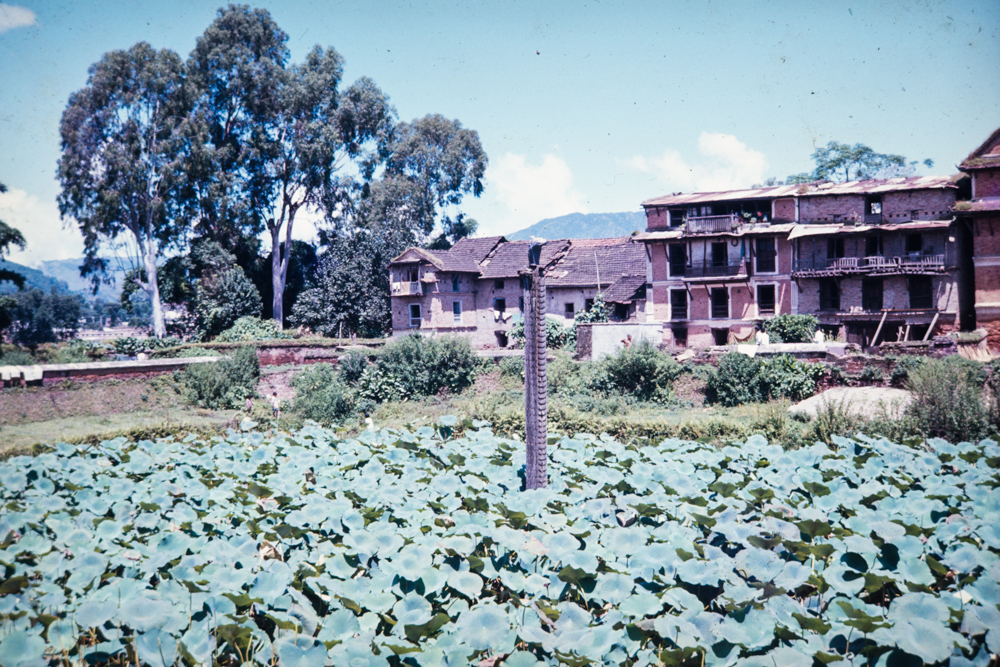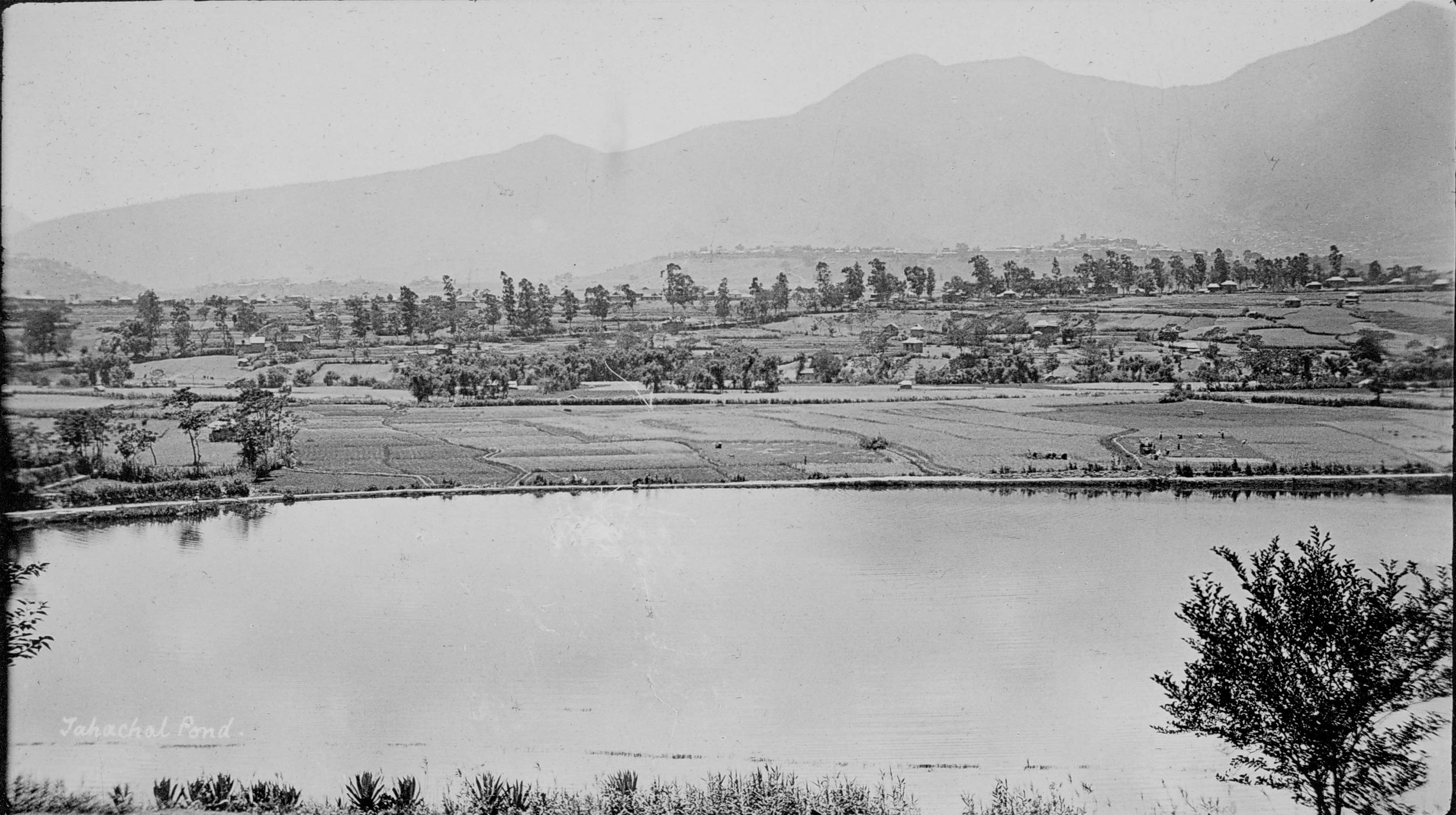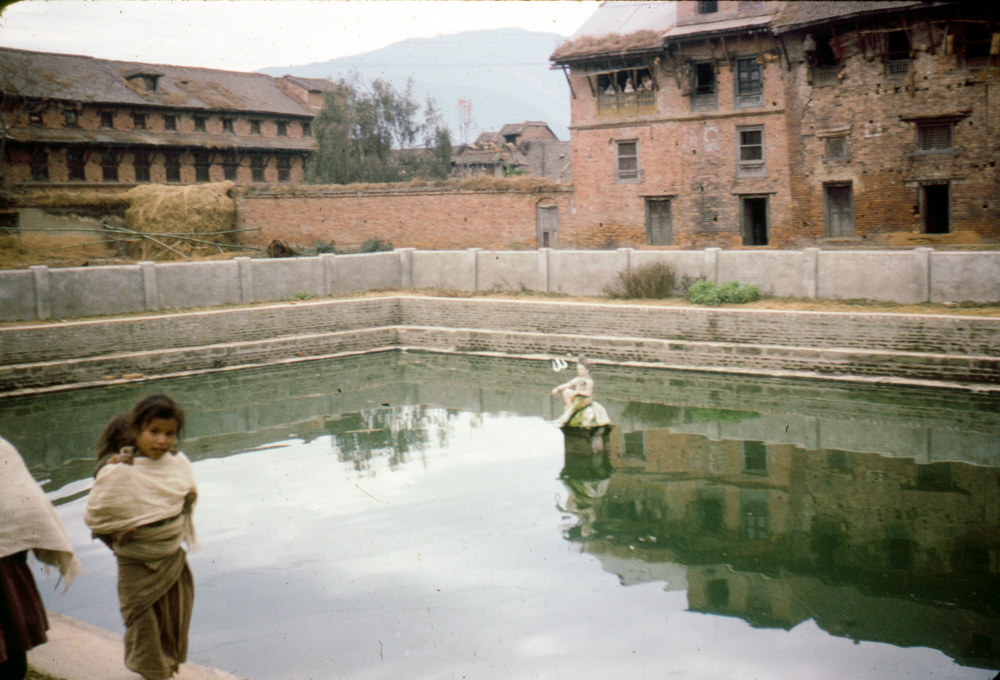Many civilizations rose and fell based on the availability of water sources. Many resisted the dry and arid climate by developing techniques to bring water far. Qanats developed in Iran and Iraq, aqueducts in Iberian Peninsula, stepwells in India are some of the ancient techniques developed to survive the harsh climate.
The civilizations in Kathmandu Valley too developed networks of water systems in form of water fountains (hitis), water tanks (jarū hiti), ponds (pukhu) and wells (tū). Water is not just vital for life but also plays an important part in the culture and social life of the people. The oral history of Kathmandu Valley regarding the start of settlement is also linked with water. The humongous lake was drained and the valley emerged with fertile soil.
Through iconography engraved in temples, palaces and monuments pay homage to the lake and its living creatures before human settlement. Many rituals, festivals and everyday practices are linked with rain, water and water sources. This proves that not just water but water sources are also equally important.
The Valley constitutes rich water sources: rivers, wetlands, marshlands, lakes and springs. The cities were constructed in the high elevation and the supply system was through raj kulo. Raj kulo is an ancient underground water supply system that fed water to ponds and water fountains within and round the cities. All three cities in Kathmandu Valley had water supplied through raj kulo.
Houses within cities were clustered leaving ample space for farming outside of the city space. Yet, cities were designed with enough space and the necessary amenities for the people such as courtyards, water fountains, water tanks, ponds, and the rest houses. The structures in the cities were not just created for aesthetics but for everyday uses. With centuries long history these amenities are still integral to ancient city space.
Among all the traditional amenities, ponds are the most ignored ones in the new urban space. Many ponds were destroyed, encroached and abandoned, ignoring its role in environment and social life of people. In past several ponds were scattered around the Valley, some within the core city, some in periphery, while some in outskirts. Ponds according to the location had a specific purpose.
What are ponds?
Ponds are man made structures with the traditional system of construction. The ancient system are still in continuation is many cities and villages within the Valley. It’s not only environmental friendly and sustainable but economic in the long run.
For constructing ponds, the first step is choosing the site for collecting water. Water seepage through the surrounding grounds and water sources along with rainwater help to fill the pond. Underground water canals connected the water sources to the ponds, helped to maintain the constant flow of water.
Retention of the water in pond is the main sutra for pond construction. The bottom of ponds was layered with easily available black cotton soil to avoid leakage of water. According to Sushil Shrestha of Patan, who had worked in restoration of ponds argues that the important feature of pond is inlet and outlet. The inlet recharges water in the pond, while outlet to drains excess water as well as it helps to dry the pond for cleaning when needed. The water movement in pond also helps to keep the freshness of water.
Ponds within the cities definitely add to the ambience of the surrounding areas. Especially for the people residing in the metro cities like Kathmandu these ponds are oasis in the concrete jungle. Fishes, ducks, birds and water plants inhabits large pool of water definitely adding on to the aesthetics values. But the ponds of the Valley have values beyond the aesthetics.
First, water is essential for continuity of life. The ponds within the cities were built to fulfill everyday necessities like cleaning, washing clothes and vegetables, feeding animals etc. If we go to the outskirts of Kathmandu many people still use ponds for many activities. Besides that water form the pond were used in emergency purpose like fire. According to heritage activist Alok Siddhi Tuladhar, the Thya Safu, (ancient book which records genealogy and events) within the private collection of Bajracharya family from Tachhe Baha has recorded that the water from Rani Pokhari was used to extinguish fire of Jana baha: in 1917 AD.
The second uses of ponds were its association with the religious activities. Temples, stupas and statues of Gods were built in the periphery of the ponds. Some ponds are even named after the rituals and deities associated with it. For example: Gahana Pokhari in Haadi Gaun is named after the ritual of finding jewels of Goddess Tudal Devi in that pond. The ritual is performed every year in the Chaitra Sukla Aasthami.
Similarly there are several other ponds named after the ritual and deities associated to pond such Naag Pokhari in Kathmandu, Siddhi Pokhari in Bhaktapur, Pimbahal Pokhari and Saptapatal Pokhari in Patan.
Interestingly there are places, which are still called by name of pond even the ponds remain in memories only. Khicha Pokhari is one of such ponds, which have been vanished long before. The old people who also have never seen the pokhari recall the name Khicha pokhari that is named after the morning ritual called Khai Chā. It was the ritual to wash the face of deities probably God Sankata. For that ritual water from the Khicha pokhari was used. Khicha Pokhari is the corrupted form of the word Khai chā.


Third, the pond functions as underground water recharging system nearby water fountains (hitis) and wells. In the ancient times, only sources for drinking water were communal water fountains or wells. In 1891, Bir Shumser started the piped water supply and supplies to the private houses were limited to ruling families. But for the general people he installed public piped water, one tap for the whole community, which was also known as Bir Dhara. We can still see nonfunctional remnants of Bir Dhara along the roadside. Post 1956, with the new development plan of public water supply and sanitation, the water supply in the houses of general public started.
Before that general people’s access to drinking was limited to wells (tū) and stone water fountains (hiti). Wells were within the courtyards and shared public space. Ponds recharged these wells. The locals of Thamel shares the memory of drying wells in that area after the pond next to Tridevi temple in Thamel was buried to construct Sanchaya Kosh building.
Fourth, ponds were built strategically to check flooding in cities and low lands. These water-retaining ponds were constructed in the periphery of the cities. If we look at Rani Pokhari it checked flooding towards the agricultural lowlands of Baagbazaar and Putalisadak by retaining water. Also water overflowing from Bhotahiti and Thahiti area went to this pond avoiding water retention in city core.
Fifth, ponds also acted as water reservoir for irrigation in the times of drought and need. Opening the flow of ponds towards the low level fields. The pond of Tahachal, which ceases to exist now, was used for the irrigating the low level fields for rice plantation. The pond and surrounding area is now under the Army barrack.

Even with many advantages, the ponds were destroyed intentionally. Most of them post 1950s. Haphazard urbanization triggered the degradation of ponds, leading to its extinct. Ponds were not maintained and abandoned leading to disappearance.
Local people unable to recognize the values of ponds were the main reason behind its degradation. Urban Planner, P.S. Joshi shares how the people in 1960s were in favor of burying pond and constructing buildings over it. People saw ponds as filthy due to lack of maintenance.
Besides the importance of the pond which should be the reason for its conservation, there are several law related to pond for its protection. Such as Local Government Operation Act 2074, Local Administration Act 2028, National Lad-Use Policy 2068, Aquatic Animal Protection Act 2017 and Ramsar Convention on Wetlands 1971. All these convention, policies and acts are for safeguarding ponds and water sources.
According to the advocate Sanjay Adhikari, “Despite having clear law for water sources, time and again the laws failed to protect them. Even the land of the ponds has been registered in the private property. This is against section 97 of local government operation act 2074.”
What went wrong?
Several factors contribute towards the disappearance of ponds. First of all, we forgot to acknowledge the traditional knowledge behind use of water sources. The ancient knowledge was treated as primitive, and new modern solutions were seen as the answers for the modern problems. These ancient practices were perceived obsolete in the modern society. The modern education system also failed to include the traditional practice of the place and opted for the imported knowledge. This does not solve the problem in the sustainable way.
Instead, many ponds are being restored with the use of concrete, which needs artificial recharging of water. This is not only unsustainable and destroys the natural habitat of water and animals but also expensive. The concretization of the marshland, wetlands and water sources is causing flooding in the cities during monsoon.
Cities around the world plan for fountains, gardens, and small water bodies to make cities beautiful and interesting to live. But in case of the Valley such things already exists with linkages to people, culture and environment. The modern city plan despised the ancient systems. It ultimately failed to include the existing amenities in the new city space.
With the population growth, the demand of water increased sharply. While water sources and supplies with cities declined limiting huge mass of population to depend on pipeline system. The ancient water practices could be one of the ways to minimize the modern day problem. Instead the ponds were seen as a free space to construct the buildings and make money.
Despite laws for the conservation of pond, it lacked implementation. Instead of making strong rule for the conservation, the government organizations took the lead in construction over the ponds. The area around the ponds was encroached slowly to build government offices, schools, local clubs and even police stations. These constructions blocked the water catchment area and in some cases even disrupted the ancient water canal for the water supply in cities.
Not just the water scarcity but also the problem of excess water in the monsoon could be minimized with these ponds. These ponds could be used as a ways to absorb the excess water and acts a reservoir in need.
A way ahead
Several ponds disappeared in the Kathmandu Valley. Only few remain. Many ponds went through bad conservation techniques with cement and iron rods that led to its extinction. This type of habits continues to this day. The protest by people in Rani Pokhari stopped it from being a swimming pool. In the process it caused an immense damage to the historical pond and temple, erasing a part of history. Also lot of taxpayer’s money was wasted and no one was held accountable. This unaccountability and lawlessness has encouraged other ponds to go through same fate. The clear example is Kamal Pokhari.
It’s not that we have lost the traditional knowledge for constructing the pond. There are several such cases of revival of ponds using traditional know-how in Bhaktapur. Not only the cost of construction but also the long-term maintenance is low as well. Despite this the question remains. Why the local government does not chose low cost and sustainable option?
Ponds touches several sensitive nerve of city planning: conserving water sources, minimizing water scarcity, maintaining ground level or continuing cultural heritage. It’s crucial now to integrate traditional knowledge in the modern education system. This might be just an example of pond but local knowledge goes a long way in many fields.
For development intervention in any place, one needs to understand the traditional knowledge of the place. Without the knowledge of local system, we can never build the sustainable cities. The cities within Kathmandu Valley are the result of evolution of hundreds of years.
Conclusion
Our lifestyles have changed considerably, so as association with the ponds. We now no more use the water from ponds to wash cloths, bathe animals or wash vegetables but the cultural connection with ponds are still tight knit. While environmental association remain indispensable, there is the need to understand the value of ponds beyond rituals, and beyond aesthetic.



